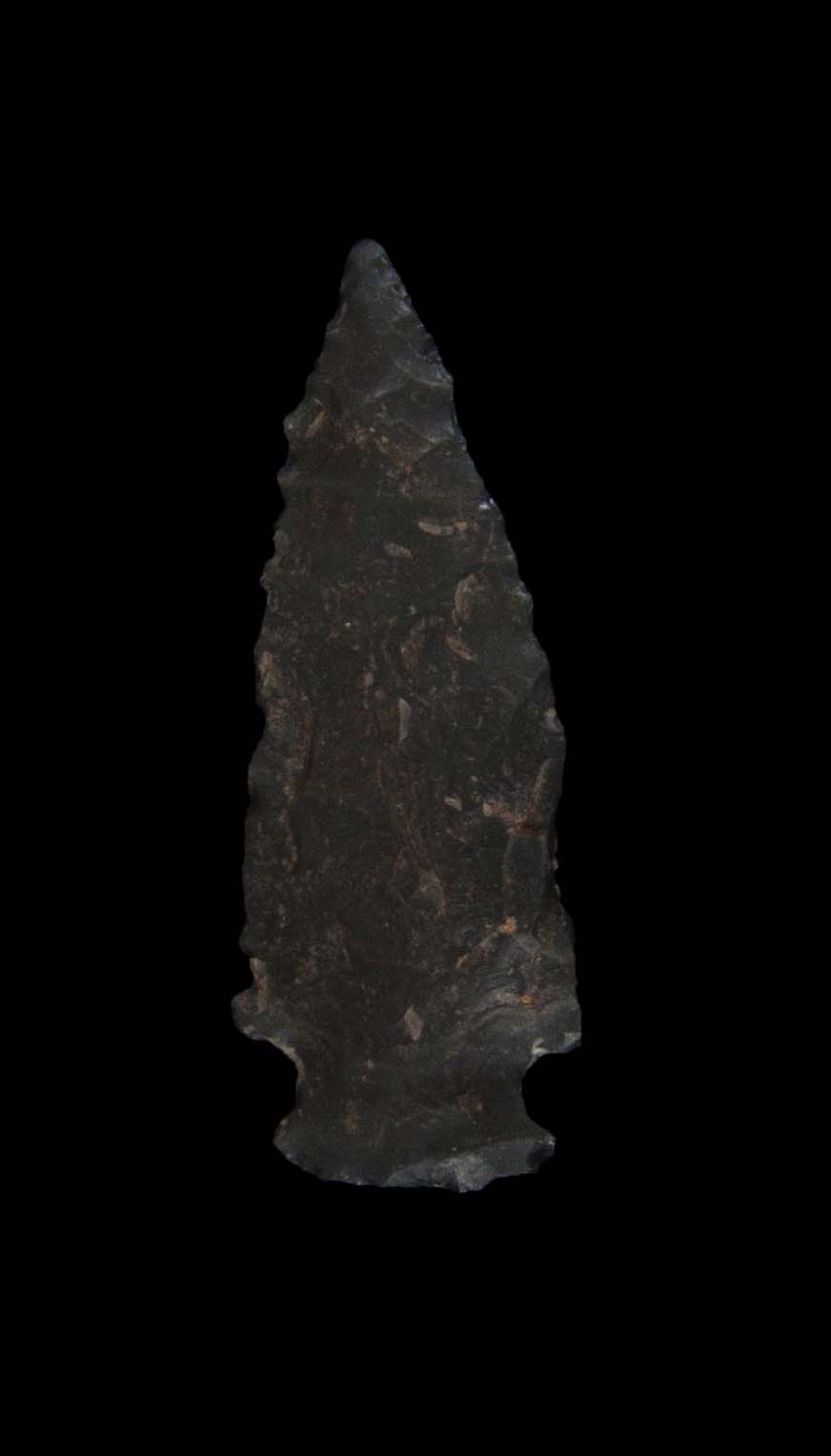Archaeological Culture: Archaic, Cochise Tradition
Geographical Range: Arizona, western New Mexico, southwestern Colorado, and south into northern Mexico.
Date Range: 3,500 – 2000 B.P.; found in sites dating as late as A.D. 500 (Sliva 2009).
Size: Average: 56.1 mm long, 19.6 mm wide, and 8.6 mm thick (Shackley 1996:Table 4); Average: 42 mm long, 15.1 mm wide at base, 21.6 mm wide on blade, and 6.3 mm thick (Loendorf and Rice 2004:Table 16).
Shape: Triangular with a wide neck and expanding stem; sometimes serrated; square or barbed shoulders.
Cross-section: Flattened, lens, and biconvex.
Base: Straight to convex.
Flaking: Percussion and pressure.
Notching: Shallow half-heart to c-shaped notches low on the sides or corners.
Materials: Any available.
Other Names: Elko series, Hueco, Basketmaker II, En Medio, Little Colorado Corner-notched.
Comparisons: Elko points have large blades, deep corner notches, and relatively large expanding stems. San Pedro points are narrower, more triangular, thicker in cross-section, have shallow side notches, and relatively smaller convex-based expanding stems. San Pedro points can also have serrations, which are rarely found on Elko points. Compared to Cienega Long points, San Pedro points have shallower, broader notches set horizontally rather than diagonally.
Compiled from the following sources:
Justice, Noel D. (2002) Stone Age Spear and Arrow Points of the Southwestern United States. Indiana University Press, Bloomington.
Loendorf, Chris, and Glen E. Rice. (2004) Projectile Point Typology, Gila River Indian Community, Arizona. Anthropology Research Papers No. 2, Gila River Indian Community Cultural Resource Management Program, Sacaton.
Lyndon, Michael G. (2005) Projectile Points as Indicators of Preceramic Occupation of the Coconino Plateau. M.A. thesis, Department of Anthropology, Northern Arizona University, Flagstaff.
Shackley, M. Steven (1996) Elko or San Pedro? A Quantitative Analysis of Late Archaic Points from White Tanks, Yuma County, Arizona. Kiva 61(4):413-432.
Sliva, R. Jane. (2009) Common Middle Archaic and Early Agricultural Period Points in Southern Arizona. Archaeology Southwest 23(1):Supplemental Information.
Compiled by:
Meghann M. Vance, Northern Arizona University Anthropology Laboratories

